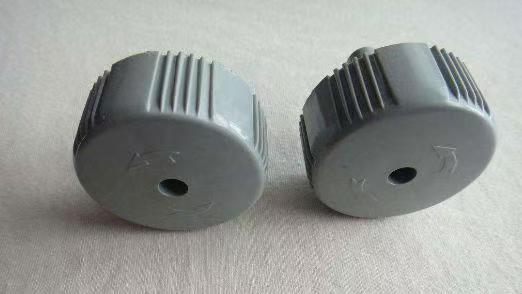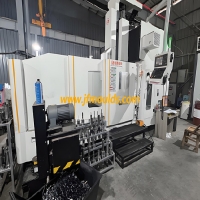Las causas y soluciones de abolladuras en productos moldeados por inyección, productos terminados incompletos y flash en productos
Las causas y soluciones de abolladuras en productos moldeados por inyección, productos terminados incompletos y flash en productos
Molde Co.,Ltd. de Taizhou Jiefeng de Mould_Taizhou de la materia (jfmoulds.com)
| Defecto del producto | Razones posibles | Solución |
| Sangría del producto | (1) El compuesto de goma insuficiente en la cavidad del moho causa contracción 1. Llenado con seguridad o cantidad insuficiente de alimentación 2. Posición de la puerta iluminada o asimetría de la puerta 3. El corredor o puerta es insuficiente o demasiado pequeño 4. El grosor de la pared del producto es desigual, y las abolladuras son propensas a ocurrir en la parte posterior en las áreas de paredes gruesas | Llevar a cabo ajustes y corrección 1. aumente la alimentación o abre la puerta del puerto de descarga más amplia 2. RestrICT, todo el adhesivo fundido que fluya hacia la puerta del sprue y evite que fluya hacia otras puertas 3. aumentar el número de canales de corredores y ampliar el tamaño de la puerta 4. El troquel de trabajo se puede modificar o la presión de inyección se puede aumentar |
(2) Ajuste inadecuado de los parámetros de tecnología de proceso 1. La presión de inyección es baja y la velocidad de inyección es lenta 2. La configuración del tiempo de inyección es demasiado corta 3. La configuración del tiempo de retención de presión es demasiado corta 4. La configuración del tiempo de enfriamiento es demasiado corta | Llevar a cabo ajustes y corrección 1. Ajuste y aumente la presión de inyección y la velocidad de inyección 2. aumentar el valor de ajuste del tiempo de inyección 3. aumentar el valor de ajuste del tiempo de retención de presión 4. Aumentando el valor de ajuste del tiempo de enfriamiento | |
(3) El plástico se está sobrecalentando 1.El plástico se sobrecalienta y la configuración de temperatura del cilindro de fusión es demasiado alto 2. La temperatura del molde es demasiado alta. 3. Hay sobrecalentamiento local en el molde o sobrecalentamiento cuando el producto se desmoldea | Llevar a cabo ajustes y corrección 1.Reduce the temperature setting value of the melt glue cylinder 2.Reduce the mold temperature and adjust t3.he inlet gate valve of the cooling system | |
| (4) The material temperature is too low or the plasticization is poor, resulting in poor flow of the molten material | Increase the temperature of the heating zones in each section of the melt glue cylinder to test the degree of plasticization of the rubber compound | |
| The finished product is not satisfactory | 1.The material "Bridges" in the hopper, resulting in insufficient feeding. 2.Insufficient injection volume, inadequate plasticizing capacity and insufficient leftover material. 3.The diversion channel is insufficient or the gate is small. 4.The flow state of the molten adhesive flowing into the multi-cavity die cannot be properly balanced. 5.The amount of molten glue in the mold cavity is greater than the injection volume of the injection molding machine. 6.The flow resistance of the mold gating system is large, the position of the feed port is improper, the cross-section is small and the form is poor, the flow process is long and tortuous. 7.Air cannot be expelled from the mold cavity. 8.The plastic contains a lot of moisture, volatile substances or has a large amount of gas in 9.the molten material. 9.The nozzle temperature is low, the barrel temperature is low, causing blockage, or the nozzle hole diameter is too small. 10.The injection pressure is low and the injection speed is slow. 11.The injection time setting is too short. 12.The pressure-holding time setting is too short. 13.The fluidity of the plastic is too poor, resulting in excessive flash and overflow. 14.The mold temperature is too low and the plastic cools down too quickly. 15.Excessive use of demolding agent, moisture in the mold cavity, etc. 16.The wall of the product is too thin, the shape is complex and the area is large. | 1. Inspect the water transport ring cooling system to eliminate the "bridging" phenomenon 2.Reduce the injection volume to maintain a fixed material intake and enhance the plasticizing capacity 3. Add more runner channels or increase the gate size 4. Correct the situation of unbalanced flow state 5. Use a larger injection molding machine or reduce the number of model cavities in the working mold 6. Improve or modify the mold gating system, including aspects such as the position, cross-section, form and flow of the feed inlet 7. Increase the number or size of exhaust ducts 8.Before plastic injection molding, it should be dried to ensure the mixing ratio and reduce impurities 9. Increase the temperature of the barrel and the nozzle to ensure adequate plasticization, and replace the nozzle with a larger aperture 10. Increase the values of injection pressure and speed parameters 11. Increase the setting value of the injection time parameter 12. Increase the setting value of the pressure-holding time parameter 13. Correct the parameter values of the temperature setting to prevent material overflow 14. Adjust the mold temperature and cooling time 15. Reasonably control the dosage of mold release agent to prevent excessive moisture 16. Try your best to reduce the complexity of the products |
| Product flash | 1.The projected area of the product exceeds the maximum product area allowed by the injection machine 2.The mold is installed incorrectly or subjected to unidirectional force 3.The injection molding machine template is not parallel or the tie rods are unevenly deformed 4.Poor parallelism of the mold or obstruction at the mold edge 5.The parting surface of the mold does not fit well, and the clearance between the cavity and the core or the sliding parts is too large. 6.The plastic has too much fluidity and the feeding amount is too large 7.The cavity material temperature is high, and the mold temperature is too high 8.The injection pressure is too high and the injection speed is too fast 9.The clamping force is not constant or uneven | 1.Choose a larger injection molding machine or select products of an appropriate area Moho 2. Check the installation of the mold and secure and press it tightly 3. Check whether the template and the tie rods are parallel and make corrections to eliminate deformation 4. Clean or grind the mold edges and check the parallelism of the mold 5. Check whether the parting surface of the mold is clean and free of debris, correct the offset or clearance, or replace the parts 6.The feeding amount is properly controlled 7. Control the temperature of the heating melt glue cylinder and the mold temperature 8. Reduce the setting of injection pressure and speed parameter values 9. Adjust the clamping force parameters or correct the symmetry on both sides of the die |

Información relacionada
Una guía completa para moldes de inyección: desde lo básico hasta las aplicaciones
2025-07-11
Una guía completa para los moldes de inyección: desde lo básico hasta las aplicaciones...
Desde el desarrollo personalizado hasta el suministro global, desbloquee la fuerza impulsora central de la fabricación moderna
2025-07-19
Desde el desarrollo personalizado hasta el suministro global, desbloquee la fuerza impulsora central de moder...
Tecnología de puerta de moho de inyección
2025-07-23
Inyection Mold Gate Technologygating Systemauto Mould_taizhou Jiefeng Mold Co., ...
Molde de inyección comúnmente utilizado seis tipos de materiales de molde
2025-06-19
La elección del acero no solo afecta la vida útil del molde, sino...
Tratamiento de superficie de los moldes
2025-07-26
Tratamiento superficial de los moho1. Procesos de tratamiento de superficie común El propósito o ...
La estructura, materiales y diseño de moldes de inyección
2025-07-18
La estructura, los materiales y el diseño de moldes de inyección en el vasto paisaje...





